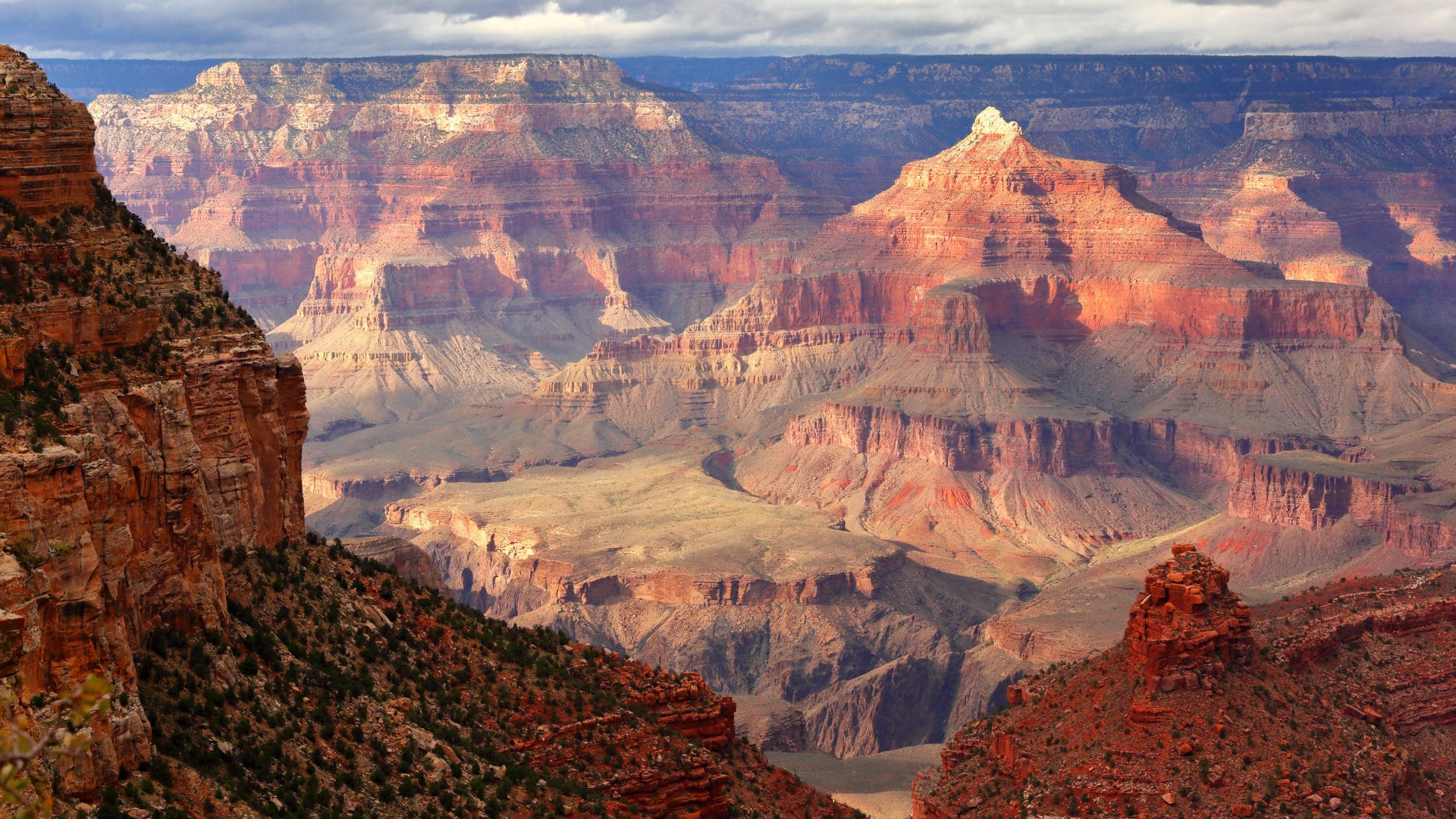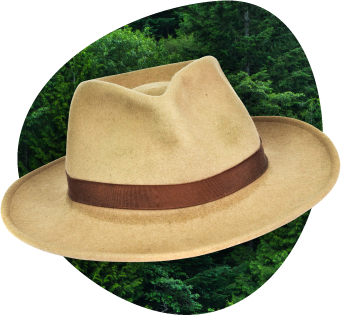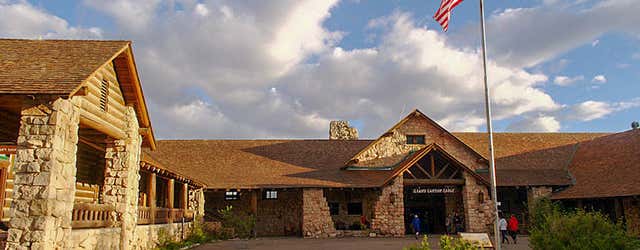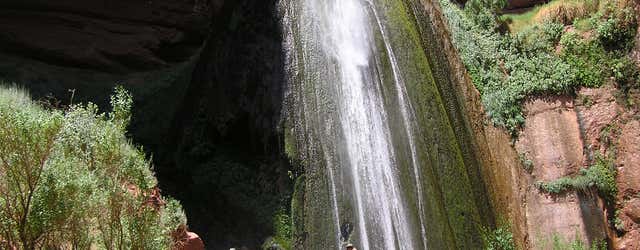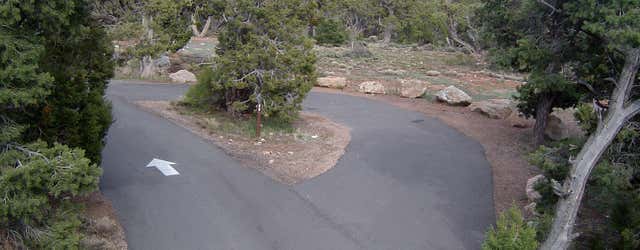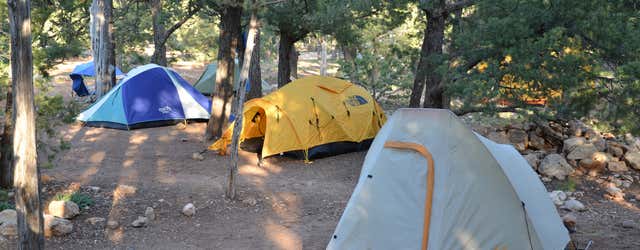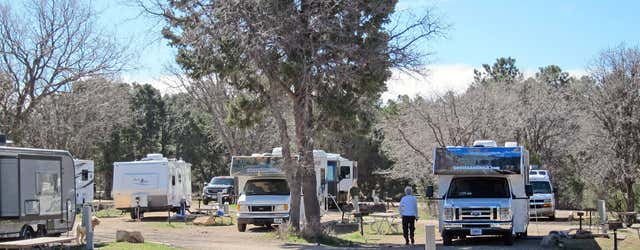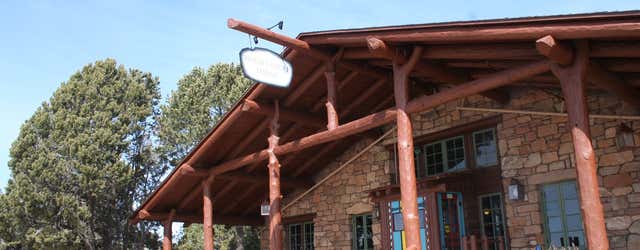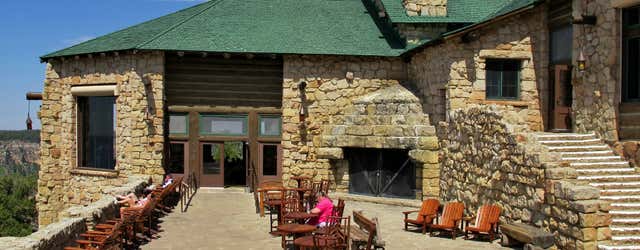If someone asked you to picture a national park, there’s a high probability the image conjured up would be Arizona’s Grand Canyon. President Theodore Roosevelt described it as “the one great sight every American should see” and declared it a national monument in 1908. National park status was granted in 1919, protecting one of the largest canyons on Earth. From watching the sunrise color the canyon walls, to hiking a mile down to the Colorado River, a visit to Grand Canyon National Park should be on everyone’s bucket list.
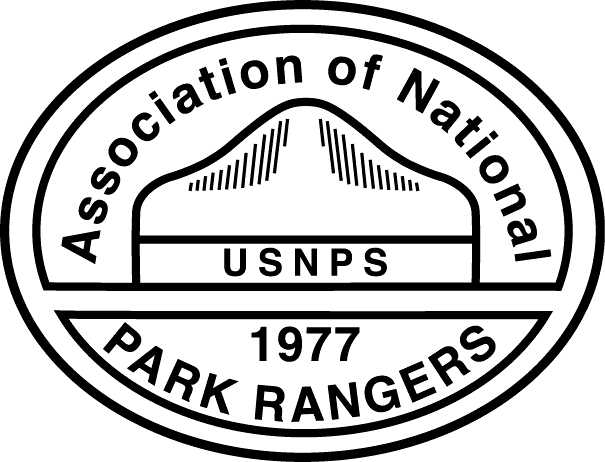
Written for you by park rangers
Who knows a national park best? Yep, the rangers who live and breathe its fresh, clean air every day. That’s who we turned to for help in creating this guide. Roadtrippers has partnered with the Association of National Park Rangers and convinced its rangers to spill their secrets for your benefit.
How to get to and around Grand Canyon National Park
Grand Canyon National Park is divided into two main regions: the South Rim and the North Rim, with a 200-mile, 4-hour drive between them. Additionally, there are vista points and activities available at Grand Canyon West and East, although these are outside the national park boundaries.
The South Rim is the most well known and popular, with extensive facilities including the main Grand Canyon Visitor Center, historic sites and museums, accommodations, and restaurants open year-round. If this is your first time to the Grand Canyon, this is where you’ll want to start out.
The North Rim has limited facilities and is open only seasonally from mid-May to mid-October. If you’re traveling through northern Arizona or southern Utah and don’t have time to visit the South Rim, the North Rim is a great option to experience the canyon from a unique and less-crowded vantage point.

The West Rim, or Grand Canyon West, is on Hualapai Indian Reservation land. This is where the famous Skywalk is located: a glass-paneled, horseshoe-shaped walk that dramatically extends out over the canyon. General admission tickets must be purchased to visit Grand Canyon West, with add-on fees for the Skywalk and other activities. The West Rim is a 2-hour drive from Las Vegas, great for a day trip. Check here for reservations and information.
The East Rim is technically inside the national park at the Desert View area, with the Grand Canyon East entrance about a 36-mile drive from the Grand Canyon Visitor Center. However, the terms “East Rim” and “Grand Canyon East” are also used to refer to the area centered around Page, Arizona, and Glen Canyon National Recreation Area, which includes the iconic Horseshoe Bend and Antelope Canyon. This area is well worth a visit, but because of its distance from the South Rim it should be considered an add-on destination.
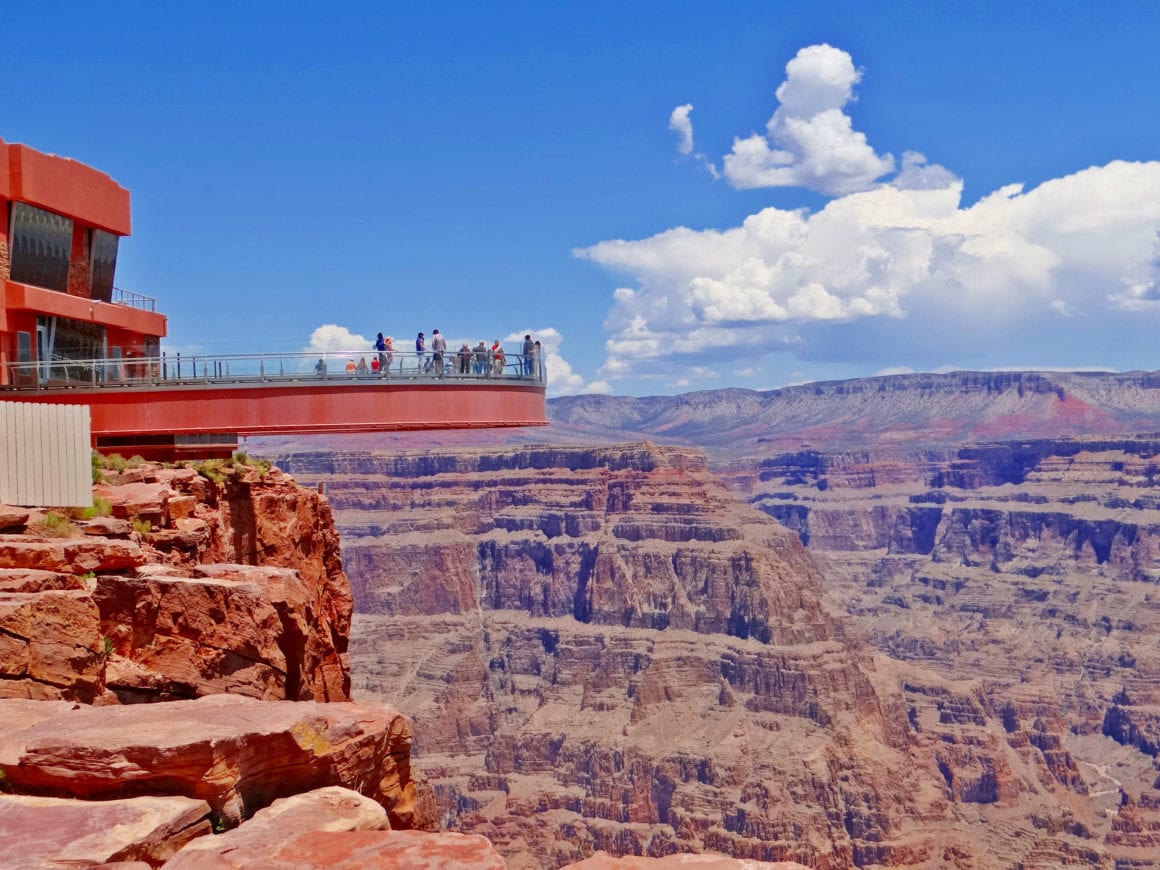
Havasupai Falls
If you’ve seen photos of a waterfall descending out of glowing orange sandstone cliffs into a pool of unbelievably turquoise water, and were hoping to get to visit it in person—unfortunately, it’s not that easy. Although it is in the Grand Canyon, this natural wonder is part of the Havasupai Indian Reservation. It’s only accessible by permitted hike with an overnight campground or lodge reservation. Permits are extremely popular and difficult to attain. Check here for reservations and information.
Airports
The most common airports used for visiting Grand Canyon National Park are Phoenix, Arizona (PHX), and Las Vegas, Nevada (LAS). Both are major airports with extensive flight and rental car options. Flagstaff, Arizona (FLG), is a smaller airport but closer to the national park. Shuttle bus service is available between FLG and the South Rim.
Average driving distances
- From PHX: 3.5 hours to the South Rim, 6 hours to the North Rim
- From LAS: 4.5 hours to the South Rim, 5.5 hours to the North Rim
- From FLG: 1.5 hours to the South Rim, 4 hours to the North Rim
Getting around
The South Rim is popular year-round and can get quite crowded during peak summer months. The best way to get around is to park at the visitor center or overflow lots and use the free shuttle bus system to access the village facilities, viewpoints, and hiking trails. Another great option is to rent a bike from Bright Angel Bicycles, next to the visitor center, and pedal the Rim Trail.

In operation since 1901, the Grand Canyon Railway takes passengers back in time on a journey from Williams, Arizona, to Grand Canyon Depot. The trip takes just over 2 hours and offers multiple tiers of service to accommodate different budgets. This is a fun option for a day trip or for overnighting in the park without the need for your own car.
When’s the best time to visit Grand Canyon National Park?
Typically, the best times to visit are the spring and fall, as summer temperatures can push 100 degrees—and higher if you hike down into the canyon. There can be a 30-degree difference between the rim and the floor of the canyon (after all, it’s over a mile deep). In the spring and fall, daytime temperatures can be a pleasant 60 to 70 degrees at the rim, though nighttime lows will reach into the 30s. Of course, it’s always best to keep a close eye on the forecast before your visit, and pack layers, especially for the transitional months of April and October.
The South Rim of the Grand Canyon sits just under 7,000 feet, while the North Rim is at 8,300 feet. The North Rim experiences significantly more winter storm weather and closes for the season (about mid-October to mid-May) at the first heavy snowfall.
If you’re staying inside the park during the summer, getting out in the early morning and later afternoon is the best way to avoid the heat and crowds. Enjoy a leisurely lunch at El Tovar or a rest at your accommodations in the middle of the day, and be refreshed for the sunset view!
What to do at Grand Canyon National Park?
Start at the main visitor center to get oriented with maps, Junior Ranger books for the kids, exhibits, and the 20-minute park film. Walk a short distance to Mather Point and get your first unobstructed view of the canyon. Take a moment to appreciate the sheer size of what’s in front of you, and think about how many millions of years it took the Colorado River to carve its way deeper and deeper into the rock.
Attend a ranger program: Free ranger-led programs are offered throughout the day, and are an engaging way to learn about the history, geology, and animals of the Grand Canyon. Check the schedule at the main visitor center or on the NPS website.
Walk around the Grand Canyon Village Historic District: This is the main area for dining, shopping, shuttle buses, and the Bright Angel Trailhead. Don’t miss out on exploring the beautiful historic buildings from the early 20th century, including El Tovar hotel, the Lookout Studio, the Hopi House, and the Railway Depot. Take time to view the historical interiors and learn about the history of humans in the Grand Canyon, from Ancestral Puebloans to pioneering photographers.
A fun and safe way to get a taste of the famous Bright Angel Trail, especially with small children, is to walk it from the Bright Angel Trailhead to Kolb Studio, where it connects again with the Rim Trail.
Visit the Yavapai Geology Museum: What better way to learn about geology than through 3D displays and interpretive exhibits, all backed with spectacular views of the Grand Canyon itself? Walk the Rim Trail between Yavapai Point and Verkamp’s Visitor Center in the Historic District (1.4 miles), taking in the Trail of Time exhibits along the way.
Take the shuttle bus to Hermits Rest: The 7-mile-long Hermit Road includes nine overlooks that are easily accessible by hopping off and back on the frequent shuttle buses. Highlights include Hopi, Maricopa, and Pima points. Spend some time at Hermits Rest to explore the historic building and enjoy a refreshment before returning back to the Village. You can also hike or bike along the Rim Trail to enjoy the viewpoints: Trailview Overlook and Maricopa Point are just a half mile from Bright Angel Trailhead in the village.

Drive to Desert View Watchtower: Perhaps the most iconic manmade structure in the Grand Canyon is the Desert View Watchtower, designed by the architect Mary Jane Colter in 1932. Climbing to the incredible observation room at the top will allow you to see up to 100 miles into the horizon. Located over 30 miles from the Grand Canyon Visitor Center, Desert View is a great pit stop on your drive in or out of the park through the East Entrance.
Watch the sunrise or sunset: Either one is a must-see at the Grand Canyon. The best spots for sunrise viewing and photography are at Mather Point and Yavapai Point. Sunset is great from both of these spots, plus Hopi Point. Predawn temperatures can be cold, so be sure to dress warmly for sunrise, even in summer.

There’s no bad way to see the sunrise or sunset at the Grand Canyon, but you can make the most of the experience by arriving at a viewpoint at least 30 minutes early (times are posted at the main visitor center) and walking along the Rim Trail to find a quiet spot. Even at popular Mather Point, if you walk east along the Rim Trail toward Pipe Creek Vista you can escape the crowds.
Take a mule ride: An iconic mule ride down to the canyon floor is a once-in-a-lifetime adventure—however, this is only offered as part of an overnight package and sells out months in advance. You can still experience time in the saddle on a 2-hour Canyon Vista Trail ride along the rim. View rules, restrictions, and reservations here.
If you have your heart set on a mule ride as part of your Grand Canyon experience, the North Rim offers additional options, including a half-day ride that descends into the canyon.
Hiking in Grand Canyon National Park
No matter which part of the park you’re visiting, you’ll find picturesque hiking trails with panoramic views throughout Grand Canyon National Park. From the iconic Bright Angel Trail at the South Rim to the challenging North Kaibab Trail at the North Rim, there are hikes for every skill level at both rims within the park.
South Rim
Rim Trail
From South Kaibab Trailhead to Hermits Rest, the Rim Trail is a mostly flat, paved trail that runs 13 miles in all. The most popular (and crowded) section is between Grand Canyon Village and the main visitor center. If you want to experience a leisurely hike with smaller crowds, head out west from Bright Angel Trailhead or east from Mather Point. Be aware that parts of the trail have no guardrail; keep a close eye on small children.
South Kaibab Trail
The South Kaibab Trail snakes down an exposed ridge, providing spectacular panoramic vistas. For a moderate hike that packs in the views, take a 3-mile round-trip to Cedar Ridge. To extend the hike, the trail ends at Skeleton Point, a 6-mile round trip with over 2,000 feet of elevation change. There is little shade and no water or restroom facilities on this trail. To access the South Kaibab Trailhead without using the shuttle bus, you can park along Desert View Drive at Pipe Creek Vista, or at the parking area at the end of Yaki Point Road.
Bright Angel Trail
Bright Angel Trail descends into the canyon from Grand Canyon Village and leads to Phantom Ranch, the historic overnight oasis on the canyon floor. Note that parts of the trail are steep and narrow, and it can be crowded near the rim. There is some shade, and water and restrooms are available seasonally along the trail.
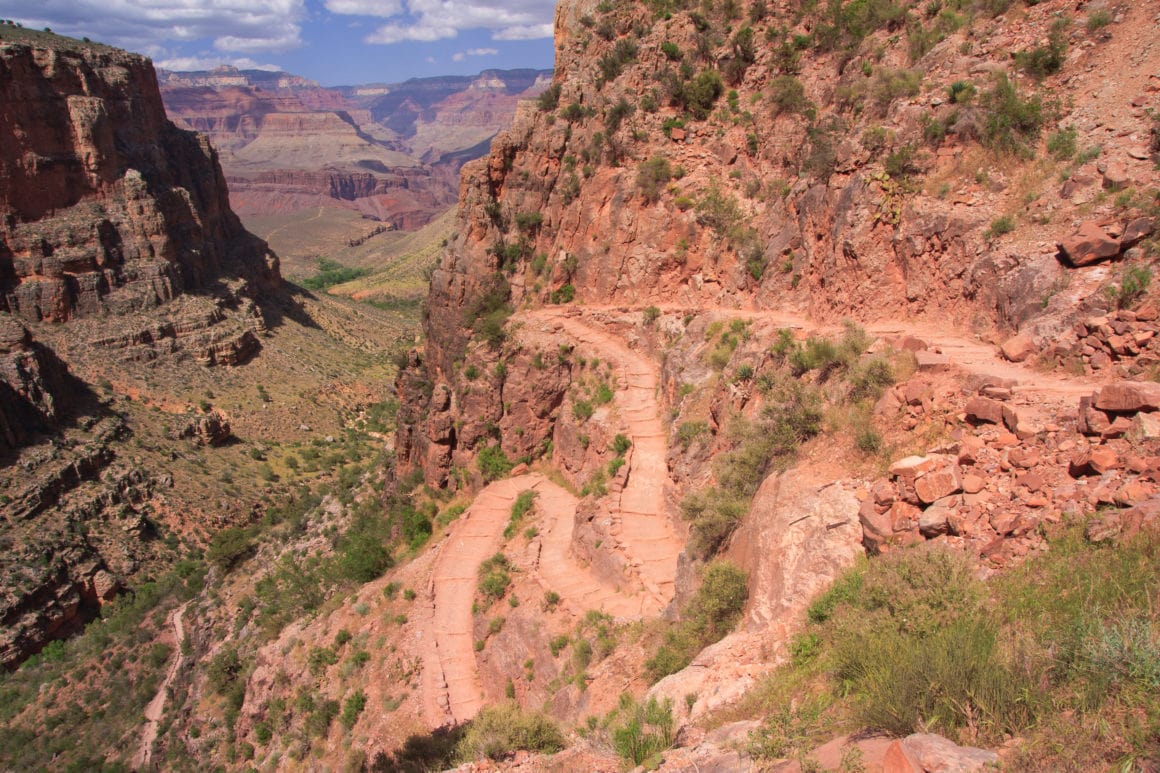
If you’re looking to get into the canyon, taking a moderate hike to the first rest house on the Bright Angel Trail will provide some truly spectacular views. The rest house is 1.5 miles into the canyon, a descent of roughly 1,000 feet.
Indian Garden, a 9.2-mile round trip with an elevation change of over 3,000 feet, is the farthest point you should consider for day hiking. Allow 6 to 9 hours for the full hike. Water, shade, and restrooms are available at Indian Garden.
North Rim
Widforss Trail
Widforss Trail follows the canyon rim for about 2.5 miles, then heads into the forest for another 2.5 miles before emerging at Widforss Point, which has incredible panoramic views. Keep in mind that while the elevation change is moderate, this hike still begins at over 8,000 feet.
North Kaibab Trail
The least visited but most difficult of the three maintained trails at the Grand Canyon, North Kaibab Trail descends steeply into the canyon via switchbacks. After 14 miles it meets up with the Bright Angel Trail and South Kaibab Trail at Phantom Ranch. An easy 1.3-mile, out-and-back hike leads to the first sweeping vista at Coconino Overlook.
Cape Final is great for families with kids looking for a moderate hike that rewards spectacular views. This level, 4-mile round trip runs through ponderosa pine forest to a secluded vista. The trailhead is located about 20 miles from the North Rim Visitor Center.

Where to stay in and around Grand Canyon National Park?
South Rim: Camping
Desert View Campground and Mather Campground offer primitive tent and RV campsites for under $20 per night. First-come, first-serve only at Desert View; reservations strongly recommended at Mather Campground April through October. For RV sites with full hookups and larger rig accommodations, reserve a spot at Trailer Village RV Park.
Mather Campground is great for its convenient location near South Rim amenities. If you’re looking for a smaller, more remote campground, then Desert View is ideal.
South Rim: Lodging
There are several hotels at the South Rim, although reservations should be made far in advance for the peak season.
- El Tovar Hotel: Built in 1903, this is the most upscale lodging option within the park. It’s located right on the rim, directly next to the Grand Canyon Railway Depot. If you’re looking for the ultimate national park lodge experience, El Tovar is worth the splurge.
- Bright Angel Lodge: Equally historic and unique is Bright Angel Lodge, which offers a range of room types from cozy units with a shared bath to historic cabins. Some rooms have canyon views.
- Yavapai Lodge: Yavapai Lodge is a great midrange option conveniently located at Market Center, next to the general store and midway between the visitor center and the historic district.
Additional accommodations can be found in the gateway town of Tusayan, Arizona, just a few miles outside the national park. For a unique glamping experience, check out Under Canvas Grand Canyon, south of Tusayan and about 30 miles from the South Rim Visitor Center.
North Rim
Accommodations at the North Rim are limited to one campground and the historic Grand Canyon Lodge. Both fill up fast, so reservations are highly recommended, and keep in mind they are open only from mid-May to mid-October.
Additional accommodations can be found around Jacob Lake, Arizona, about an hour outside the park.
Phantom Ranch is one of the coolest places to stay in the Grand Canyon, but it’s not for the faint of heart. Accessible only by foot, mule, or raft, the cabins at Phantom Ranch are a bucket-list item for those looking to stay at the base of the canyon. Bookings are made by lottery, which can be entered online.

Where to eat in and around Grand Canyon National Park?
- Bright Angel Lodge: Serves up sandwiches, salads, wraps, and other light meal options.
- El Tovar Hotel: Tovar serves more upscale options than Bright Angel Lodge, while still offering sandwiches and burgers to appeal to most anyone. Reservations recommended.
- The food trucks near El Tovar and Bright Angel Trailhead are great options for fresh, quick meals and snacks on the go.
- Canyon Village Market General Store and Delicatessen: Pick up provisions and freshly made sandwiches for your perfect Grand Canyon picnic.
Try the black bean burger at Bright Angel Lodge. And while you’re there, check out Bright Angel Fountain to enjoy an ice cream cone with Grand Canyon views. This seasonal shop offers frozen treats as well as beverages and snacks.
How many days should you plan to spend in Grand Canyon National Park?
As with all national parks, the longer you stay the more there is to do and enjoy. Still, one night at the South Rim is enough time to learn about the park at the visitor center and Yavapai Geology Museum, explore the historic district, take in a ranger program, hike along the Rim Trail, and soak in the unforgettable canyon vistas at sunset and sunrise.
If you’re coming from Flagstaff, add in time before the Grand Canyon to visit the lesser-known but excellent national monuments in the area: Walnut Canyon, Wupatki, and Sunset Crater Volcano.
